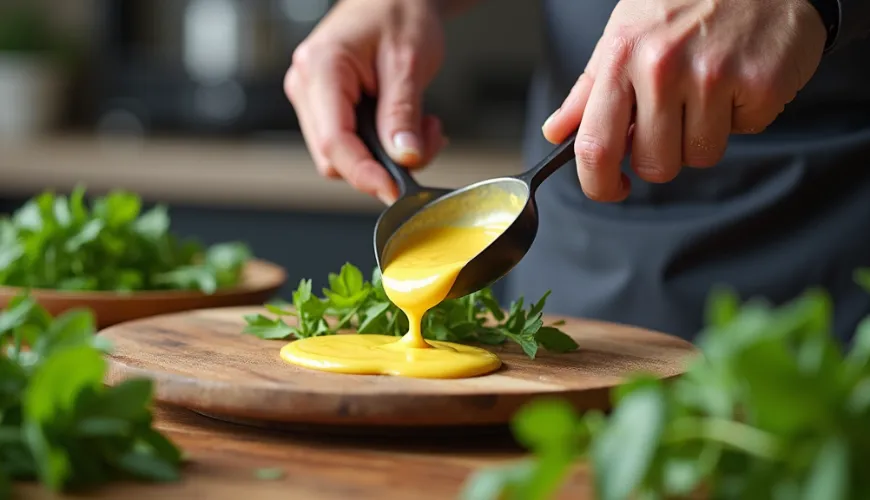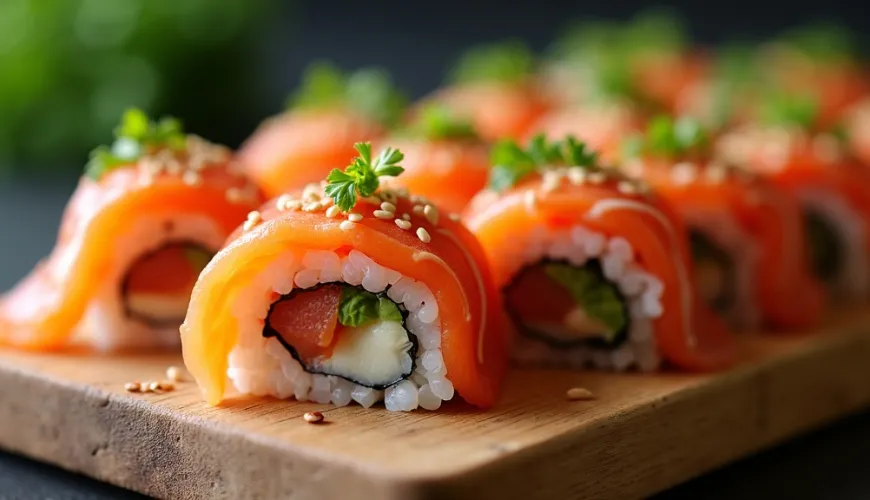
Uramaki as trendy sushi rolls for a fun meal with friends

Uramaki - A Colorful Revolution in the World of Sushi
While traditional Japanese sushi has its well-defined rules, the Western world has begun to play with them in its own way. Perhaps that's why a type of sushi was created that is known even to those who have never tasted classic nigiri - uramaki. Colorful, imaginative, and often surprisingly flavorful, uramaki rolls have become a symbol of modern sushi culture, blending Eastern tradition with Western creativity.
At first glance, they capture your attention by being "inside-out." While classic maki has the nori seaweed on the outside and rice on the inside, uramaki is the exact opposite. Rice wraps around the nori, creating a soft, moist outer layer, often adorned with sesame seeds, tobiko caviar, or chopped chives. This visual detail makes them an aesthetic experience as well.
How Was Uramaki Sushi Born?
Although one might assume that uramaki, given its origins, is as old as sushi itself, it is actually a relatively modern creation. It was developed in the 1960s and 1970s in Los Angeles. Chefs there tried to make sushi more appealing to American customers who were not accustomed to the taste of seaweed. This led to the creation of the "California roll", the first uramaki roll with avocado, crab meat, and cucumber, with the nori carefully hidden inside.
This approach, known as the inside-out roll, quickly gained popularity and inspired the creation of dozens of other variants. Uramaki spread from Los Angeles to the rest of the world and is now one of the most popular types of sushi in both restaurants and home kitchens.
Salmon Uramaki - A Delicious Classic in a New Coat
One of the most common variants of uramaki is undoubtedly salmon uramaki. Salmon is popular among sushi lovers for its delicate flavor, buttery texture, and high content of healthy omega-3 fatty acids. When combined with avocado, cucumber, or even cream cheese, it creates a roll that is not only visually appealing but also tastefully balanced.
Try our natural products
Imagine an everyday scenario. A young couple wants to have a sushi night at home. They are not professional chefs but are eager to try something new. They are familiar with classic maki, but this time they decide on salmon uramaki. They slice a fresh fillet into thin slices, prepare rice seasoned with rice vinegar, nori, avocado, and sesame seeds. With the help of a bamboo mat, they create their first, perhaps slightly crooked, but all the more delicious roll. Tasting it, they discover that they might like this "inside-out" style sushi even more than the classic – the rice on the outside is tender, the salmon inside is the dominant flavor, and the sesame adds a slightly nutty accent.
Sushi That Isn't Afraid of Boundaries
One of the greatest advantages of uramaki is its variability. Unlike traditional sushi, which respects simplicity, uramaki allows for creativity. While classic nigiri typically includes only rice and a slice of fish, uramaki often features combinations like fried shrimp with mango, tuna with chili mayonnaise, or tofu with avocado and kimchi. It all depends on the creator's imagination.
Uramaki is also often decorated – besides sesame seeds, toppings can include caviar, fish meat, delicate herbs, or even thin slices of fruit. This makes them not only tasty but also visually appealing. On social media, especially Instagram and Pinterest, the rolls become hits not just for their taste but also for their appearance.
Uramaki at Home - A Surprisingly Accessible Delicacy
You might think that making sushi at home is difficult. But the truth is, uramaki can be easier than it seems. The key is well-cooked sushi rice, quality ingredients, and a little patience when rolling. Today, you can easily find nori seaweed, sushi rice, and special rice vinegar in stores. Fresh fish like salmon is also available in specialized stores or from certified suppliers.
It's important to thoroughly rinse the sushi rice first, then cook it and season it with a mixture of vinegar, sugar, and salt. Then spread it evenly on plastic wrap or a bamboo mat covered with nori seaweed. Add pieces of salmon, avocado, or cucumber, possibly a bit of cream cheese, and carefully roll it up. Sprinkle the top with sesame seeds or caviar and cut into smaller pieces. The result? Homemade uramaki sushi that can easily rival what you'd find in a restaurant.
Uramaki vs. Other Types of Sushi
So how does uramaki differ from other types of sushi? Unlike maki, which is wrapped with nori seaweed on the outside, uramaki has rice on the surface. It differs from nigiri in that it is rolled sushi, not hand-formed. And if you compare uramaki with temaki (cones), you'll find that while they have similar ingredients, they offer a different visual and sensory experience.
Uramaki sushi simply takes the best of both worlds – Japanese precision and Western playfulness. It's no wonder it has become a phenomenon that has penetrated kitchens worldwide. Whether you prefer delicate flavors or are drawn to spicy combinations, there's always an uramaki that will appeal to you.
Why Try Uramaki?
In addition to tasting great and offering endless flavor variations, uramaki also has health benefits. Fish like salmon are rich in omega-3 fatty acids, which support the brain, heart, and eyesight. Vegetables like avocado or cucumber provide fiber, vitamins, and minerals. And sushi rice, when prepared without unnecessary additives, is easily digestible and nutritious.
Moreover, it is a dish that is both light and filling. It is suitable for both a festive dinner and a light lunch. And thanks to its colorfulness and aesthetics, it can appeal to children or those who don't typically seek out sushi.
As the famous chef Nobu Matsuhisa says: "Sushi is not just food. It's a way to connect people through taste and experience." And uramaki gives it a modern, playful form.
In an era where more and more people are concerned with the quality, origin, and sustainability of food, uramaki sushi can serve as a great example of how traditional cuisine can be connected with the modern world. If you also choose ingredients from organic or local sources, you're giving the best not just to your body but to the planet as well.





